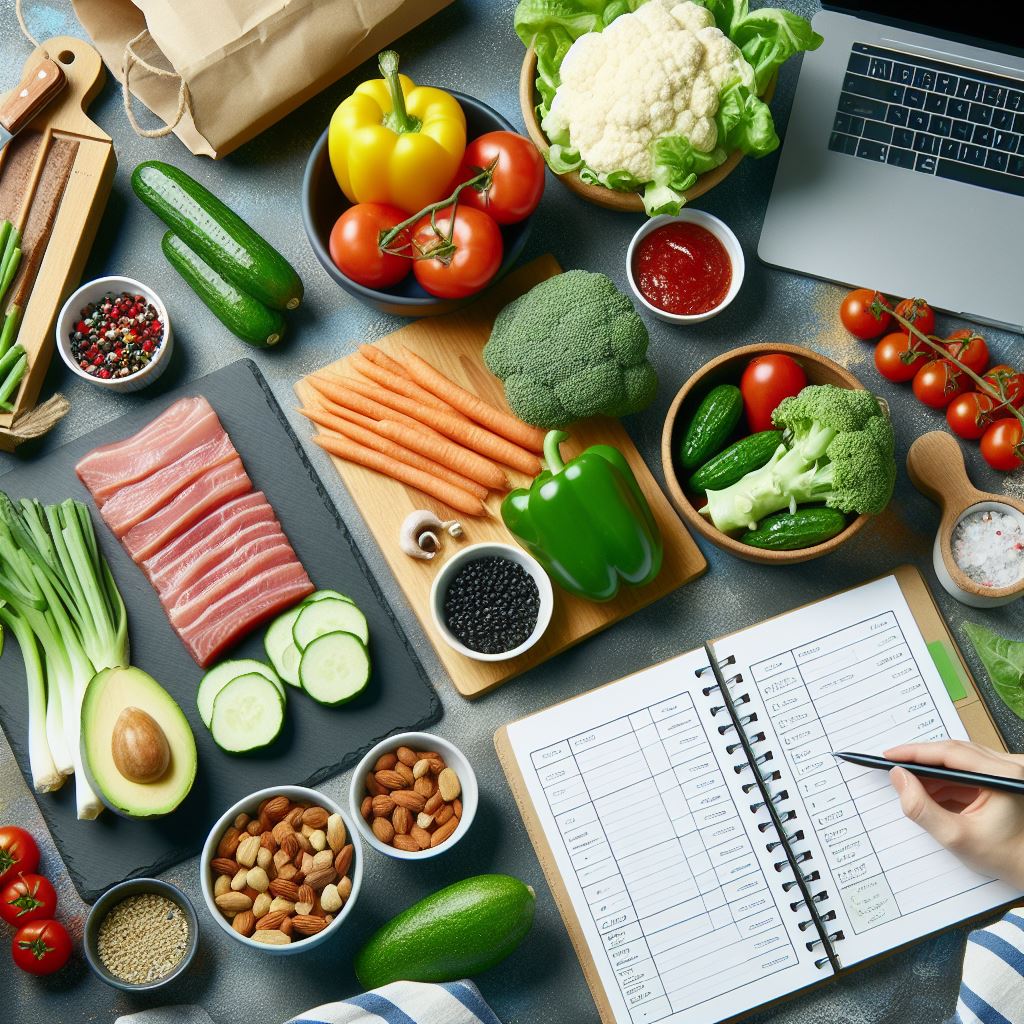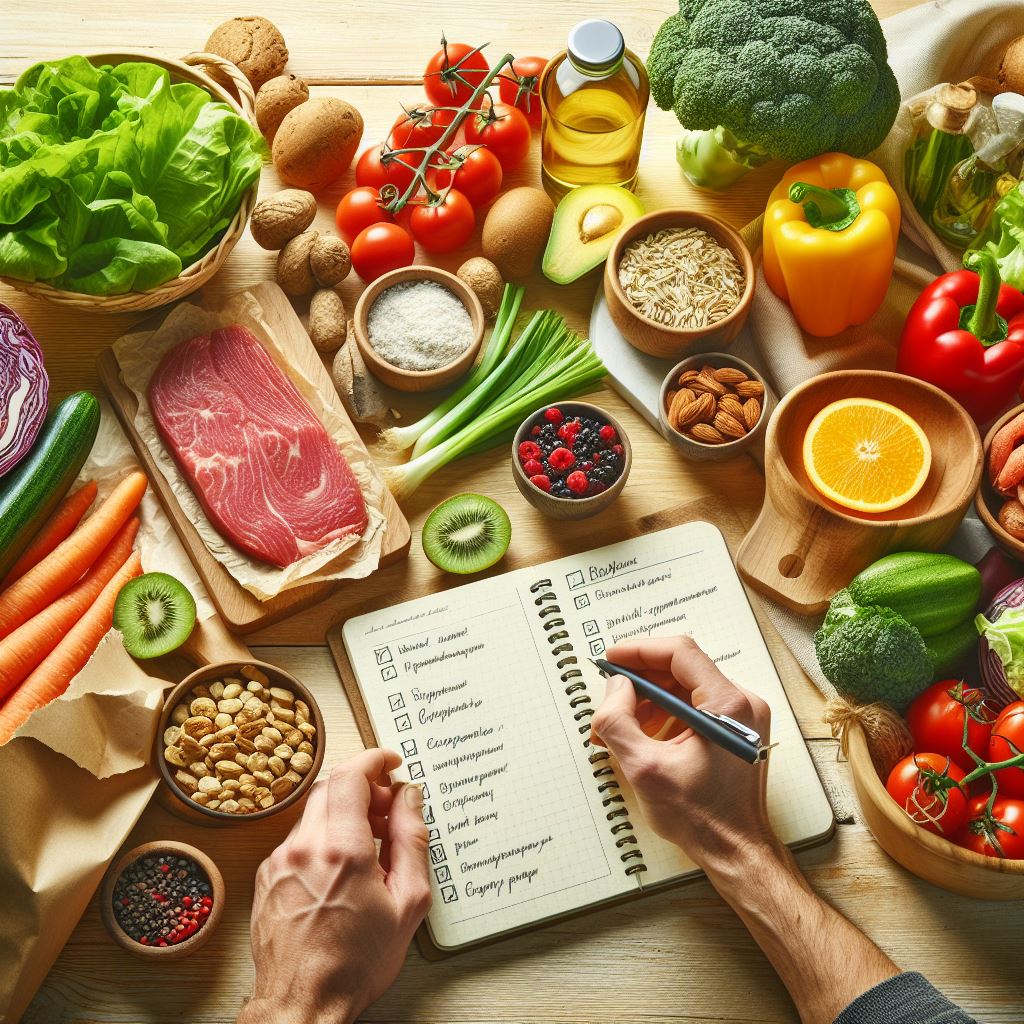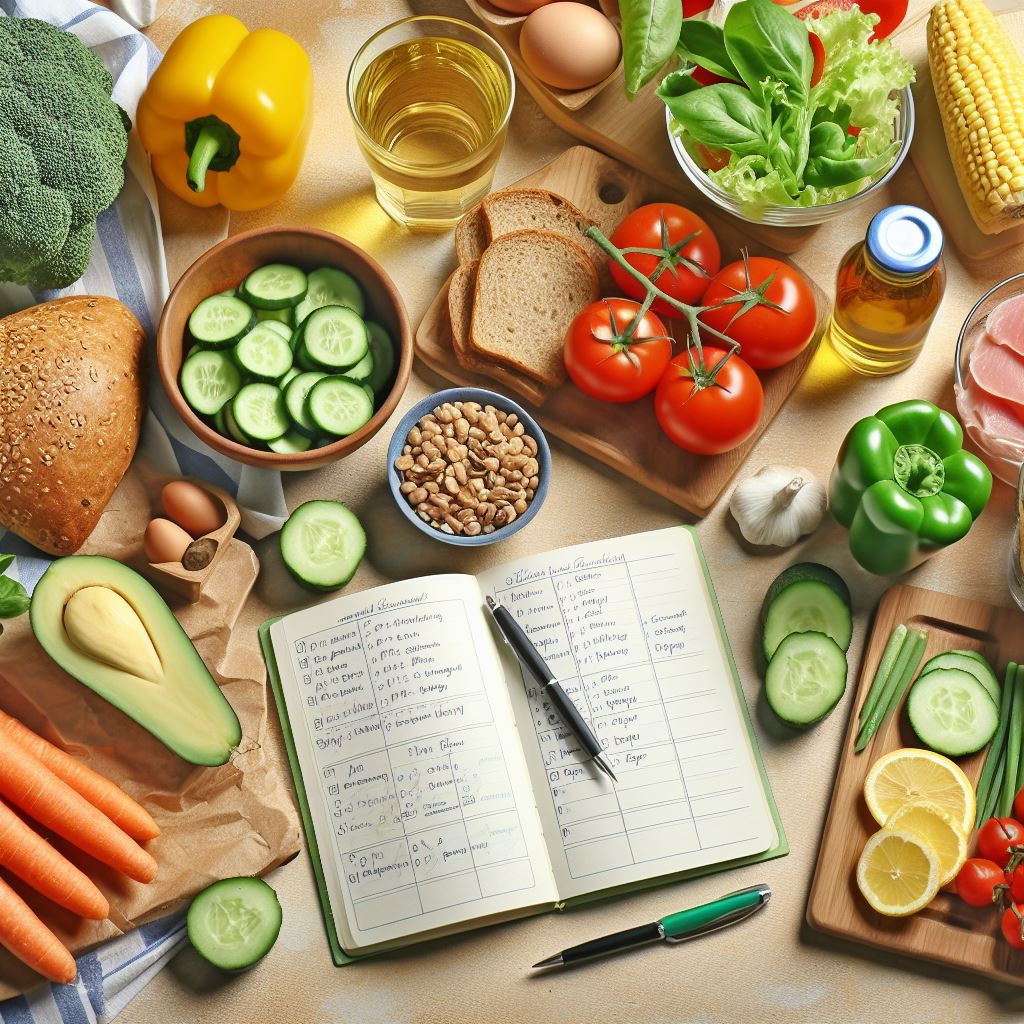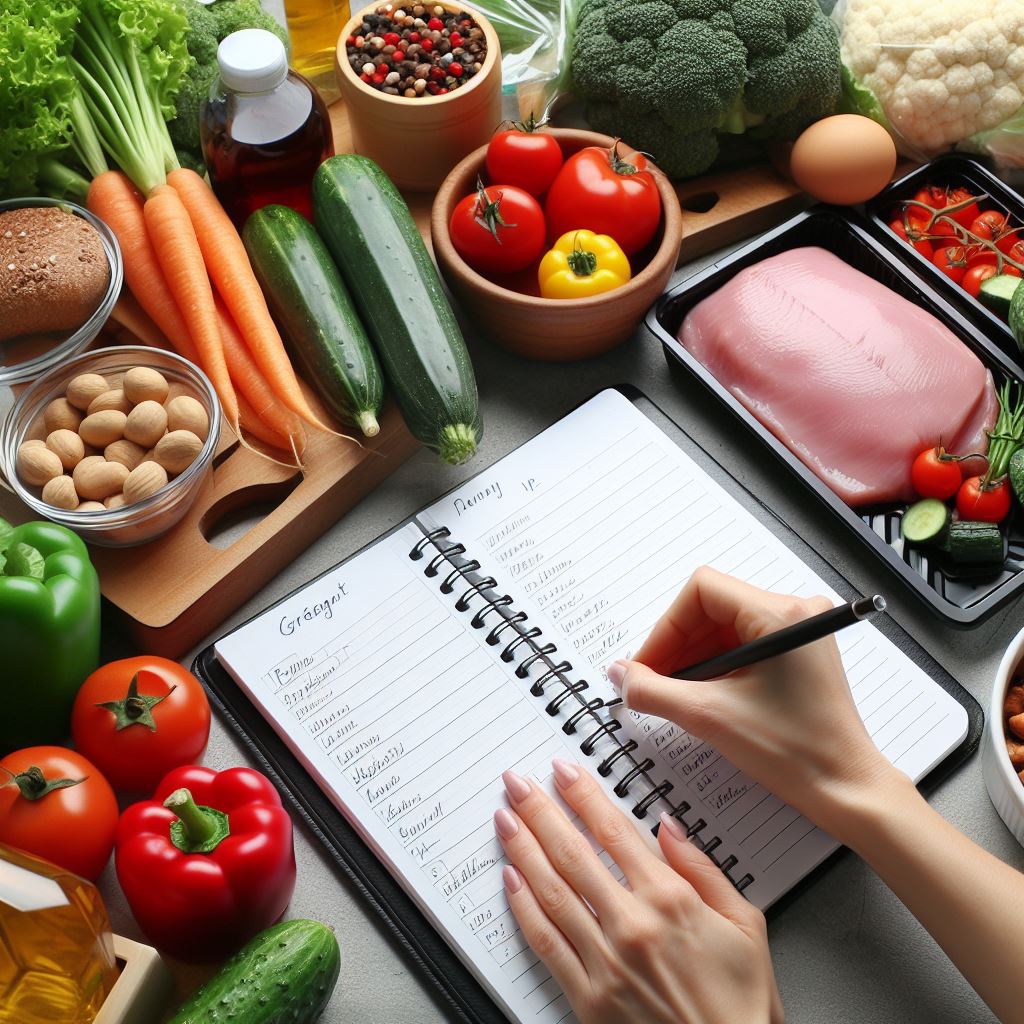Planning and prepping meals through thoughtful grocery shopping and meal planning saves time and promotes healthier eating. It streamlines the cooking process and minimizes food waste.
Grocery shopping and meal planning are essential components of maintaining a balanced diet and managing your time efficiently in the kitchen. By organizing your food shopping trips and outlining your meals for the week, you not only ensure that you have all the necessary ingredients on hand, but you also avoid the daily stress of deciding what to eat.
This approach to meal management can lead to better grocery budgeting, as it reduces the likelihood of impulsive purchases while shopping. Planning your meals can also encourage a more varied and nutritious diet, as you can intentionally include a range of food groups and new recipes to try. A well-executed plan leads to a smoother cooking experience, leaving you more time to enjoy your meals and less time fretting over them.

Understanding The Basics Of Meal Planning And Prep
Embarking on a meal planning journey can transform your daily routine. It simplifies meal decisions and ensures a balanced diet. With some organization and the right tools, you’ll master meal prep in no time. Let’s dive into how meal planning and prep can work for you.
The Benefits Of Meal Planning: Health, Budget, And Time
- Healthier eating: Know exactly what goes into every dish.
- Cost-effective: Save money by buying only what you need.
- Time-saving: Free up time during the week with pre-prepped meals.
Essential Tools For Efficient Meal Planning
| Tool | Use |
|---|---|
| Meal Planning App | Track your recipes and grocery lists. |
| Storage Containers | Keep meals fresh throughout the week. |
| Measuring Cups | Ensure accurate portion sizes. |
Overcoming Common Meal Planning Challenges
- Variety: Mix recipes to avoid eating the same meals.
- Time: Choose simple recipes for busy days.
- Portion control: Use tools to measure servings accurately.
Strategies For Smart Grocery Shopping
Embarking on a grocery shopping trip without a plan is like navigating unknown waters without a compass. Smart grocery shopping strategies can turn this chore into a breeze and ensure you’re stocking your pantry with the best choices for your meal plans. These strategies focus on saving time, money, and boosting your diet’s nutritional value.
Creating A Master Grocery List: Sticking To The Essentials
A well-thought-out grocery list can be your wallet’s best friend. Visualize your weekly meals. List the needed ingredients. Group similar items together—like dairy, produce, and proteins. This stops you skipping an item and helps limit impulse purchases.
- Fresh fruits and vegetables for nutrition and snacks
- Whole grains like bread, rice, and pasta for energy
- Protein sources such as meat, legumes, and nuts for muscle repair
- Dairy or alternatives for calcium and vitamin D
Navigating The Grocery Store Efficiently
Efficient shopping saves time and reduces stress. Start with the store perimeter; it’s where fresh items are. Then move inward for other essentials. Stick to your list. The middle aisles usually have processed foods which can derail nutrition goals.
Understanding Food Labels And Making Healthy Choices
Food labels are treasure maps to healthier eating. Look at serving size, calories, and nutrient contents. Pay special attention to saturated fat, sodium, and sugar levels. Opt for items with higher fiber, vitamins, and minerals. Your body will thank you!
Budget-friendly Grocery Shopping Tips
Save money without sacrificing quality. Generic brands often match the quality of name brands but at a lower cost. Buy in bulk when it makes sense, especially for non-perishables. Watch for sales and use coupons. Don’t shop hungry—hunger can lead to unnecessary spending on snacks.
Executing A Successful Meal Prep Routine
Embarking on a meal prep journey transforms your approach to cooking and eating. It promises organized shopping, efficient cooking, and stress-free meal times. Let’s kickstart a successful meal prep routine with some essential steps.
Choosing Recipes And Mapping Out The Week’s Meals
Begin with selecting a variety of recipes that cater to your nutritional needs and satisfy your taste buds. Consider dividing your week into theme nights like Meatless Monday or Fish Friday to simplify this process. Use a table or app to organize your meals for the week.
| Day | Meals |
|---|---|
| Monday | Grilled chicken, quinoa, and veggies |
| Tuesday | Beef stir-fry with brown rice |
Batch Cooking And Portion Control: Making Meals Last
Opt for batch cooking to save time and energy. Cook large quantities of a recipe, then divide it into individual serving sizes to avoid overeating. Reusable containers are perfect for this task, ensuring proper portion control.
- Prepare proteins, grains, and veggies in bulk.
- Use measuring cups for consistent portions.
Storing And Organizing Your Meals For Easy Access
To keep meals fresh and accessible, label your containers with dates and contents. Invest in high-quality storage solutions that stack neatly in your fridge or freezer. A clear arrangement means you’ll find meals quickly.
- Designate meal prep areas in your fridge.
- Arrange meals by type and consumption order.
Incorporating Variety And Flexibility In Your Meal Prep
Maintain excitement for your meals by including different flavors and textures. Keep a stock of versatile ingredients to spice up or alter prepped meals, ensuring you can adapt to cravings or changes in plans.
- Add fresh herbs or condiments to enhance flavor.
- Keep backup ingredients for quick meal switches.
Adapting Meal Planning For Special Diets And Needs
Welcome to the dedicated spot where meal planning adapts to meet unique dietary requirements. With the right strategies, anyone can tailor their meal prep for success, regardless of dietary constraints. Discover how to customize the meal planning process for different diets and special needs.
Strategies For Plant-based, Keto, Paleo, And Other Diets
Finding the right fit for lifestyle and health objectives is crucial. Explore these strategies:
- Plant-Based: Stock up on various beans, whole grains, and fresh produce. Plan meals around seasonal vegetables for variety and cost-effectiveness.
- Keto: Focus on high-fat, low-carb staples like avocados, cheese, and select meats. Use apps to track macronutrients.
- Paleo: Base grocery lists on grass-fed meats, fish, and a rainbow of vegetables. Avoid processed foods and sugars.
- Create custom shopping lists that align with the selected diet’s guidelines. This ensures each meal aligns with dietary goals.
Meal Planning For Allergies And Intolerances
Eating safely with allergies or intolerances is paramount. Implement these tips:
- Read food labels carefully to avoid hidden allergens.
- Prepare separate meals or ingredients when cross-contamination is a risk.
- Communicate with family or roommates about safe food storage and preparation.
- Consider using allergy-friendly recipe resources for inspiration and guidance.

Adjusting Portion Sizes And Meal Components For Fitness Goals
Meal prep aligns with fitness and health goals when portion sizes match energy needs. Use this approach:
| Goal | Protein | Carbs | Fats |
|---|---|---|---|
| Weight Loss | Higher | Lower | Moderate |
| Muscle Gain | Higher | Higher | Moderate |
| Maintenance | Moderate | Moderate | Moderate |
- Select foods that are nutrient-dense and align with targeted calorie intake.
- Adjust recipes as needed, increasing or decreasing quantities of main components.
- Plan snacks that complement daily meal plans and fitness routines.
Advanced Meal Planning Techniques
Welcome to the craft of advanced meal planning, where expertise and creativity transform routine food prep into a strategic art. These techniques not only save time and reduce stress but also elevate the daily task of cooking into an adventure. Journey with us as we explore ingenious meal planning methods. Get ready to revolutionize your kitchen habits!
Seasonal Meal Planning And Making The Most Of Local Produce
Seasonal meal planning aligns what you eat with the time of year. It brings fresh, flavorful, and nutrient-rich dishes to your table. Use these steps:
- Check seasonal charts: View local produce availability.
- Visit farmer’s markets: Discover what’s fresh and inspiring.
- Create a seasonal recipe list: Match meals with current produce.
Seasonal planning reduces costs and supports local farmers. You enjoy the best taste and nutrition that nature offers.
International Cuisines: Expanding Your Palate With Meal Prep
Meal prep travels the world, introducing exotic flavors to your table. Embrace global gastronomy through these tips:
- Pick a country: Start with one you’re curious about.
- Learn staple ingredients: List essentials for authentic taste.
- Create a dish rotation: Schedule different countries weekly.
This approach exposes you to diverse cultures and broadens your culinary skills.
Freezer Meals And Long-term Meal Storage Solutions
Freezer meals and storage cater to busy lives and forward-thinking kitchens. Follow these guidelines:
- Choose freezer-friendly dishes: Casseroles, stews, and soups work well.
- Portion before freezing: Store in individual servings for ease.
- Label with dates and contents: Avoid mystery meals later on.
This method offers a homemade meal any night, with minimal effort.
Tech Tools And Apps To Enhance Meal Planning And Prep
Today, we dive into a world where technology meets the kitchen. “Tech Tools and Apps to Enhance Meal Planning and Prep” will transform how you think about food. Picture this: less stress, more control, and healthier eating habits, all with the help of smart tech!
Recipe Management And Digital Shopping Lists
Keep recipes and grocery items at your fingertips. With clever apps, turn meal inspiration into reality. Quickly capture recipes from the web and sync them with digital shopping lists. Imagine walking through the aisles with a neatly organized list sorted by category on your phone!
- Easy recipe saving and categorization
- Automatic shopping list generation
- Smartphone access to lists
Meal Planning Apps And How They Can Transform Your Routine
Goodbye, paper planners! Hello, sleek apps that offer personalized meal suggestions. Whether for a busy family or a fitness-focused individual, these apps plan your meals for the week. They make sure you never miss an ingredient again.
- Scan personal preferences and dietary restrictions
- Suggests meals for the entire week
- Sync with your calendar for added convenience
Tracking Nutrition And Macros With Meal Prep Software
Stay on top of your health goals with platforms that track nutrition and macros. Perfect for fitness enthusiasts and health-conscious eaters, these tools provide in-depth analysis of your meal plans.
| Feature | Benefit |
|---|---|
| Macro Tracking | Monitor protein, carbs, and fat intake. |
| Calorie Count | Manage daily calorie goals. |
| Nutrient Analysis | Ensure balanced meals every day. |

Conclusion
Embracing the art of meal planning and prepping is transformative. It simplifies your grocery trips and enriches your diet. With a clear strategy, you save time, reduce waste, and enjoy healthier eating habits. Start your journey to more mindful and efficient meal management today, and relish the rewards every bite brings.
Frequently Asked Questions Of Planning And Prepping Meals: Grocery Shopping, Meal Planning
How Do I Plan A Meal And Grocery Shop?
Start by assessing your pantry and current meal preferences. Create a weekly menu and list required ingredients. Prioritize healthy options, then organize your grocery list by store sections. Stick to your list to save time and reduce impulse buys. Choose fresh, seasonal produce for quality and value.
What Are The 5 Rules In Planning Meals?
1. Balance nutrition by including diverse food groups. 2. Consider portion sizes to manage calorie intake efficiently. 3. Include variety to cover a wide range of nutrients. 4. Account for personal dietary needs and preferences. 5. Plan for meals’ preparation time and complexity.
How Do You Plan Meals And Shops?
Plan meals by choosing recipes for the week, then create a shopping list with needed ingredients. Shop for groceries based on that list, adhering to your meal plan to ensure efficiency and minimize food waste. Prioritize fresh produce and staples for a balanced diet.
What Is Meal Planning And Prepping?
Meal planning is the process of deciding in advance what to eat during a specific period, while meal prepping involves preparing whole meals or dishes ahead of time. It’s an efficient way to maintain a healthy diet, save time, and reduce food waste.







